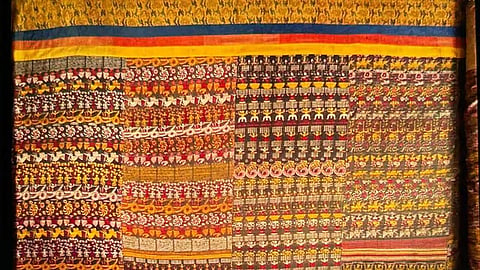
- Home
- Live Blog
- Breaking News
- Top Headlines
- Cities
- NE News
- Sentinel Media
- Sports
- Education
- Jobs

Staff Reporter
GUWAHATI: Chief Minister Dr Himanta Biswa Sarma is in London to give final touches to an MoU with the Victoria and Albert Museum in London so as to bring back the 16th-century Vrindavani Vastra of Srimanta Sankardev to display it in Assam for a certain period.
The Chief Minister said, “We’ve reached this stage to bring back Vrindavani Vastra by virtue of the initiatives taken by the Prime Minister and the Indian Embassy in the UK. If everything goes as our plan, we can bring this sacred fabric to Assam by 2027. We need to construct a museum of international standards in Guwahati to keep this fabric. We’ve already allotted a plot of land at Khanapara in Guwahati for the proposed museum. JSW Group will construct the museum that will have its ownership with the state government. This group of companies has played the leading role in the proposed homecoming of the sacred fabric.”
The Chief Minister said, “Vrindavani Bastras are on display in four museums in the world – one each in London, Paris, the USA (Boston) and Los Angeles. The biggest fragments of the Vaishnavite textiles are on display in the museums of London and Paris. Many generations of Assam have not seen Vridavani Vastra. If we bring it back to Guwahati for a period, they can have their first-hand knowledge of the sacred textiles. We’re trying to display this fabric in Delhi and Mumbai as well so as to give the people there a glimpse of the Vaishnavite culture. This vastra is a timeless masterpiece, woven with devotion and the spirit of Mahapurush Srimanta Sankardev. This sacred textile can bring Vaishnava culture alive through its divine craftsmanship.”
The Koch King, Naranarayan, patronised weaving of Vrindavani Vastra depicting the life of Lord Krishna in Vrindavan. It was made of woven silk using the complex ‘lampas’ technique. This technique requires two weavers working simultaneously. It measures around 937 cm by 231 cm and is assembled from 15 panels. This piece has been in the British Museum since 1904.
Also Read: Cachar's Janajatiya Gaurav Diwas: A Tribute to Birsa Munda's Vision of Inclusive Development